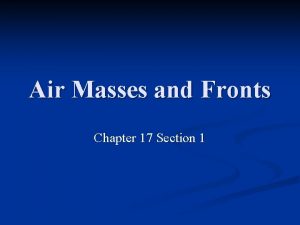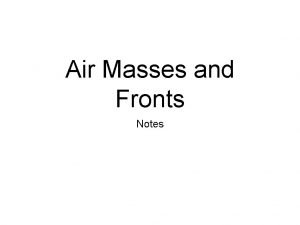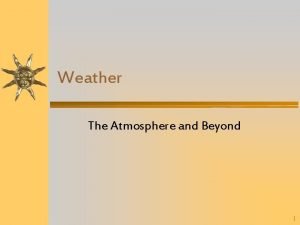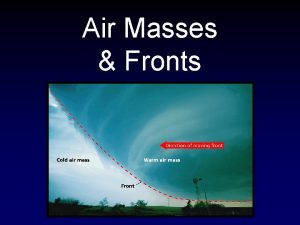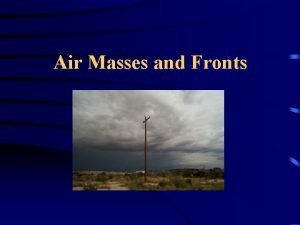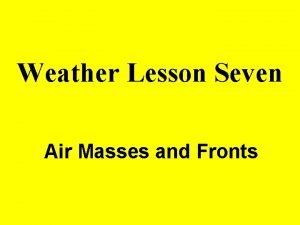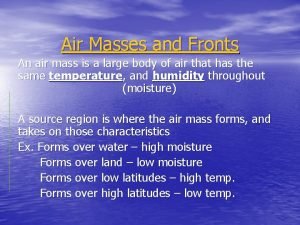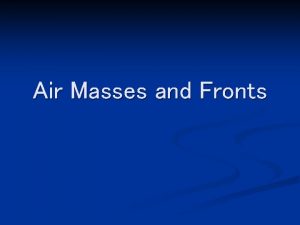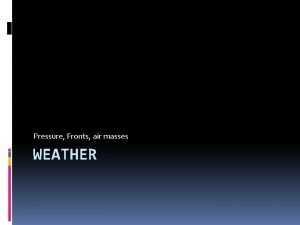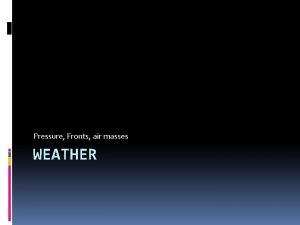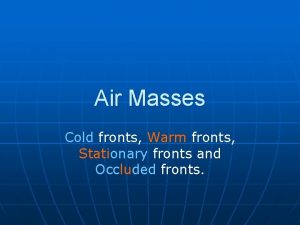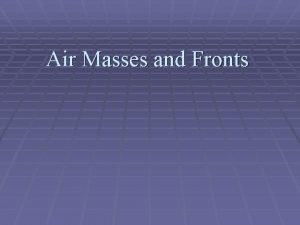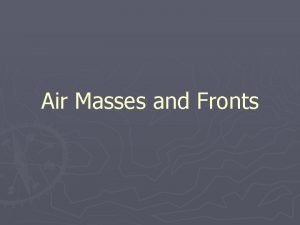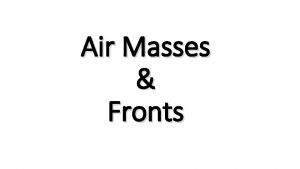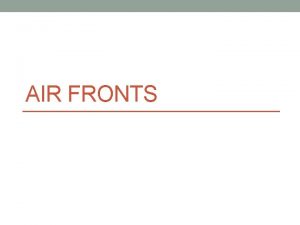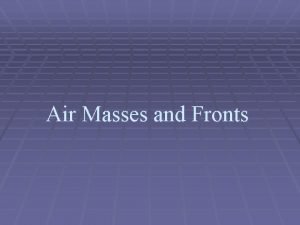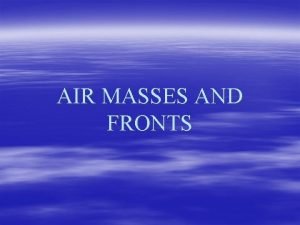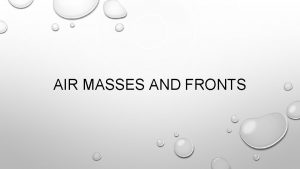Air Masses Weather Fronts Low pressure air is















- Slides: 15

Air Masses & Weather Fronts

Low pressure air is convergent. Masses of air come from different locations. Will high pressure air do this? COLD H L HOT

Air masses are defined by geography continent = dry maritime = humid Arctic = frigid Polar = cold Tropical = warm

A mass of c. P air approaches Virginia Beach as shown in the diagram Probably over the next few hours in Virginia Beach 1) Pressure will decrease and temperature will increase 2)Pressure will decrease and temperature will decrease 3) Pressure will increase and ? Y H temperature W will increase 4) Pressure will increase and temperature will decrease c. P

Which map shows the two correctly labeled air masses that frequently converge in the central plains to cause tornadoes?

Typical Northern Hemisphere Cyclone (Cyclone = Low Pressure System)

Fronts are narrow transition zones between air masses that differ in density due to temperature differences. Fronts only occur in LOW PRESSURE, where air masses converge.

Cold Front • Cold air behind • Moves quickly • Deep/thick clouds = heavy storms (thunderstorms)

Warm Front • Warm air behind • Moves slowly • Long thin clouds = light steady precipitation

PROFILE (side) CONTOUR (from above)

Which front is faster?

Occluded Front Faster moving cold front “catches up to” warm front.

All are mentioned here!

This satellite image shows cloud patterns associated with weather fronts over the United States on a certain day. Nebraska (NE) and New York (NY) are labeled. Which type of front was producing the weather in Nebraska when this image was taken? (1) cold front (3) stationary front (2) warm front (4) occluded front

Base your answers to questions 57 through 59 on the cross section below, which shows 2 weather fronts moving across N Y State. Lines X and Y represent frontal boundaries. The large arrows show the general direction the air masses are moving. The smaller arrows show the general direction warm, moist air is moving over the frontal boundaries. 57 58 Which typewhy of front represented letter X? the [1] Explain the is warm, moist airby rises over frontal 59 Which type of front forms when front [1] X catches and overtakes boundaries. COLD front Y? [1] Because it is less dense OCCLUDED
 Air mass vocabulary
Air mass vocabulary Area of low pressure where air masses meet and rise
Area of low pressure where air masses meet and rise Air masses form in the tropics and have low pressure
Air masses form in the tropics and have low pressure What are middle-latitude cyclones?
What are middle-latitude cyclones? How a warm front forms
How a warm front forms Air masses in north america
Air masses in north america Why are cold fronts steeper than warm fronts
Why are cold fronts steeper than warm fronts Why does low air pressure usually indicate stormy weather
Why does low air pressure usually indicate stormy weather High pressure and low pressure
High pressure and low pressure Low atmospheric pressure
Low atmospheric pressure Two cold air masses converge on a warm air mass
Two cold air masses converge on a warm air mass Whats an air mass
Whats an air mass Air masses & frontswhat is an air mass?
Air masses & frontswhat is an air mass? Air masses & frontswhat is an air mass?
Air masses & frontswhat is an air mass? Air masses & frontswhat is an air mass?
Air masses & frontswhat is an air mass? Air masses & frontswhat is an air mass?
Air masses & frontswhat is an air mass?


